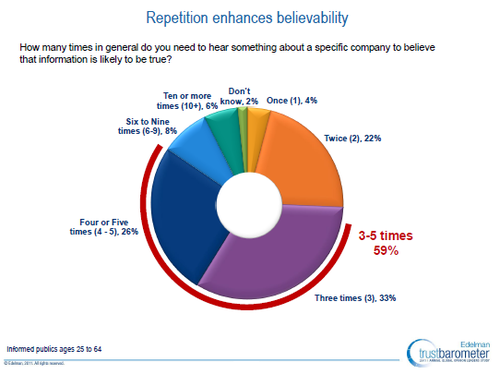Author Note: This post originally appeared in the Adobe Experience Delivers blog. You can find it here. This version has some updates and new ideas.
A few months ago, I went way back in time (not just because I was going to a Huey Lewis concert) and revisited a marketing classic–Positioning: The Battle for Your Mind by Jack Trout and Al Ries. The book is in the Top 100 business books of all time and Trout & Ries (together and independently) published other books taking a look at the issue as the markets changed or from different perspectives (like differentiation, simplicity, etc.).
I went back to those books (which I always liked since they are about looking for simple, obvious ways to differentiate) because of some reminders of what customer experience is all about. While lots of different definitions exist, both Forrester and Gartner (not to say that Forrester and Gartner are THE experts in customer experience, but its interesting that they both have similar definitions) define cutomer experience around “perceptions.”
- Forrester: ” “How customers perceive their interactions with a firm”
- Gartner: “The customer’s perceptions and related feelings caused by the one-off and cumulative effect of interactions with a supplier’s employees, systems, channels or products.”
I am not going to dissect these definitions, but the keyword is perceptions. And that got me thinking about positioning. Because perceptions are intangible. They are feelings and reactions that exist in the mind of the customer–just like the idea behind positioning.
Ries and Trout say, “Positioning is not what you do to a product. Positioning is what you do to the mind of a prospect. That is, you position the product in the mind of the prospect.” I would add that after creating the position in the prospect’s mind, you then have to deliver a product or service that is consistent with that positioning.
When you look at it that way, its clear that customer experience really starts for your company by defining a differentiated positioning platform. Therefore, positioning is aligned creating a brand promise. When I talk of brand I am speaking broadly–what your company stands for and exists to do for customers. Your brand promise needs to be based on differentiated positioning (Adobe has a great one, IMO, which is “changing the world through digital experiences.” I think that communicates very simply want Adobe is all about). If your products don’t deliver on your positioning, then you have broken your brand promise—and that can be disastrous due to the impact of social media.
You also need to communicate it consistently (and get others to tell your story), since it takes repetition for people to believe your story, as this picture from the Edelman Trust Barometer illustrates:

(Marketers, remember this picture when sales, service, or other leaders ask you to change the message to make it “newer”).
Your brand promise, and the things you do to fulfill it, should establish a set of expectations in the mind of your prospects and customers (if it doesn’t, they will ignore you). Expectations are interesting, too. Just like perceptions they are different for everyone. Esteban Kolsky has an interesting blog on the customerTHINK site about this–with the comments and discussion something not to be missed.
The expectations your customer has and how your address them will determine the perceptions that a customer forms about their experience.
Putting it all together, I think the path is simple, although the implementation and execution is complex.
1. Use positioning approaches to define a brand promise that is unique, differentiated, and obvious for your company.
2. Focus all areas of your business on delivering on the brand promise (this is not a marketing only thing—this is marketing as the strategic driver for all business operations).
3. Use that promise to set expectations, and implement processes and technical solutions, that enhance your ability to create positive perceptions with your customers for all interactions.
4. Evaluate your success, and the moves of competitors, to determine if your need to adjust your positioning and promise due to competitive or marketing issues.
Taking this approach will simplify your strategy and clarifying focus will enhance the ability of your company to focus on creating those positive perceptions that creates great experiences. I mentioned Sonos on response to Bob Thompson’s post that looked at whether technology can create customer delight. Sonos’ positioning is as the “wireless hi-fi system” that brings “all the music on earth. in every room. wirelessly”. Bold and clear. They deliver on that with another key attribute—incredible simplicity (that I think could be part of their positioning). My perceptions after using the system are overwhelmingly positive. And, while they have not really had to adapt their positioning or promise, they do continue to innovate, adding new services (like Songza) to offer more value.
Put it all together and Sonos is a perfect example of all of these things. A well positioned and complete brand promise. Execution that delivers on that promise. And positive perceptions from a satisified customer who wants to tell the world about it.
(Conversely, consider the sad case of Progressive, whose positioning is all about saving money on insurance and being “Fast.Fair.Better”. Then they were none of these things in the eyes of a customer (perceptions). And they are now paying the price, as Chris Selland described in this post.)
So, while in some ways marketing has not changed—positioning still matters. In others it has-it better describe reality and make promises that you can keep—to generate the positive perceptions that are the foundation of great customer experiences.



